*NURSING > STUDY GUIDE > Chamberlain College of Nursing NR 507 FINAL EXAM STUDY GUIDE (All)
Chamberlain College of Nursing NR 507 FINAL EXAM STUDY GUIDE
Document Content and Description Below
Chamberlain College of Nursing NR 507 FINAL EXAM STUDY GUIDE021 NR507 PATH FINAL EXAM STUDY GUIDE REPRODUCTIVE Endometrial cycle and occurrence of ovulation Manifestation of female reproductive fun... ctioning is menstrual bleeding, which starts with menarche (1st period) and ends with menopause (cessation of menstrual flow for 1 year). Average age of menarche is 12 with a range of 9-17. Appears to be r/t body weight, especially body fat ratio. At first cycles are anovulatory and vary from 10-60 days or >. Then in adulthood range form 25-35 days. Length varies considerably. Cycle and regular ovulation are dependent on • The activity of gonadostat • Initial pituitary secretion of gonadotropin FSH • Estrogen positive feedback for the preovulatory FSH and LH surge, oocyte maturation, and corpus luteum formation and production of progesterone. The average menstrual cycle lasts 27 to 30 days and consists of three phases, which are named for ovarian and endometrial changes: the follicular/proliferative phase, the luteal/secretory phase, and the ischemic/menstrual phase. Phase 1-is the follicular phase in which begins on day one of one’s menstrual cycle. It lasts until about day 14. -In phase 1 the endometrium grows to form a lush lining inside of the uterus. Phase 2: Luteal phase-this is where the body secretes the hormones estrogen and progesterone. -These hormones work together to prepare the lining of the uterus for implantation. -This last for 12 days. Phase 3: Menstrual phase-The estrogen and progesterone start to decline and the endometrial lining begins to shed. This lasts for 3-5 days and the process restarts. Ovulation -Release of ovum -Present at the beginning of the luteal/secretory phase. -The ovarian follicle begins to transform into the corpus luteum. -Pulsatile secretion of the LH from the anterior pituitary stimulates the corpus luteum to secrete progesterone. -This will initiate the secretory phase of endometrial development.-Glands and blood vessels in the endometrium branch and curl through a functional layer, and the glands begin to secrete a thin glycogen-containing fluid= the secretory phase. *If conception occurs the nutrient-laden endometrium is ready for implantation. *The HCG hormone is secreted 3 days after fertilization by blastocytes and maintains the corpus luteum once implantation occurs at day 6 or 7. *HCG can be detected in maternal blood or urine about 8-10 days after ovulation. *Production of estrogen and progesterone continue until placenta can adequately maintain hormonal production. *Ovulatory cycles have a length of 24-26.5 days. *The primary ovarian follicle requires 10-12.5 days to develop. *The luteal phase appears at 14 days. Ovarian events of the menstrual cycle are controlled by gonadotropins. High FSH levels stimulate follicle and ovum maturation (follicular phase), then a surge of LH causes ovulation, which is followed by development of the corpus luteum (luteal phase). Ovarian hormones control the uterine (endometrial) events of the menstrual cycle. During the follicular/proliferative phase of the ovarian cycle, estrogen produced by the follicle causes the endometrium to proliferate (proliferative phase) and induces the LH surge and progesterone production in the granulosa layer. During the luteal/secretory phase, estrogen maintains the thickened endometrium, and progesterone causes it to develop blood vessels and secretory glands (secretory phase). As the corpus luteum degenerates, production of both hormones drops sharply, and the “starved” endometrium degenerates and sloughs off, causing menstruation, the ischemic/menstrual phase. Cyclic changes in hormone levels also cause thinning and thickening of the vaginal epithelium, thinning and thickening of cervical secretions, and changes in basal body temperature. Uterine Prolapse descent of cervix or entire uterus into vaginal canal. In severe cases the uterus falls completely through the vagina and protrudes from the introitus. Symptoms of other pelvic floor disorders may also be present. Tx depends on severity of symptoms and physical condition of woman. First line treatment is often a pessary- removable mechanical device that holds uterus in position. The pelvic fascia may be strengthened through kegels or by estrogen therapy in menopausal women. Healthy BMI, preventing constipation, and treating chronic cough may also help. Surgical repair with or without hysterectomy is the last resort. Page-771 fig 25.11 -Dropping of the cervix or the entire uterus into the vaginal canal.-In severe cases the uterus completely through the vagina and protrudes from the introitus. -Symptoms of other pelvic floor disorders may also be present. Symptoms: urinary-sensation of incomplete emptying of bladder, incontinence,frequency,bladder splinting to accomplish voiding. Bowel-constipation or feeling of rectal fullness, difficult defecation, stool or flatus incontinence. *Pain or bulging includes pelvic pressure, low back pain, and vagina, bladder or rectum bulging. *Sexual-decreased sensation, lubrication or arousal. -Dyspareunia Treatment: -Depends on age and severity. -Isometric exercise-strengthen the pubococcygeal muscle. KEGELS* -Estrogen-to improve tone and vascularity of fascial support POSTMENOPAUSAL* -Pessary—a removable device to hold pelvic organs in place. -Weight loss -Stool softeners to avoid constipation -tx of lung and cough conditions PCOS Polycystic ovary syndrome (PCOS) is a difficult syndrome to diagnose because several factors are involved. It is a syndrome in which at least two of the following are present: oligo-ovulation or anovulation, elevated levels of androgens, or clinical signs of hyperandrogenism and polycystic ovaries. Prolonged anovulation leads to infertility, menstrual bleeding disorders, hirsutism, acne, endometrial hyperplasia, cardiovascular disease, and diabetes mellitus in women with hyperinsulinemia. Presenting s/s: obesity, menstrual disturbance, oligomenorrhea, amenorrhea, regular menstruation, hyperandrogenism, infertility or they could be asymptomatic. Diagnosis of PCOS is based on evidence of androgen excess, chronic anovulation, and inappropriate gonadotropin secretion. Tests for impaired glucose tolerance are recommended. As stated, polycystic ovaries do noT have to be present and, conversely, their presence alone does not establish the diagnosis. Goals of treatment include reversing signs and symptoms of androgen excess, instituting cyclic menstruation, restoring fertility, and ameliorating any associated metabolic or endocrine, or both, disturbances.*Most common cause of anovulation and ovulatory dysfunction in women. *Leading cause of infertility and most common endocrine disturbance. *Mostly common in younger women *Usually has two/three of the following: irregular ovulation, elevated levels of androgens (testosterone), and the appearance of polycystic ovaries on ultrasound. *Polycystic ovaries do not need to be present to dx POS. *Thyroid dysfunction, hyperprolactinemia, and congenital adrenal hyperplasia must be ruled out first. *Associated with metabolic dysfunction, dyslipidemia, insulin resistance, and obesity. *Strong genetic component and possibly differentially inherited. *Difficult to diagnose as symptoms may change over time. *80% of women have one or more of the symptoms with normal ovaries. *More prominent sx as we age. *May be associated with Cushing’s syndrome, acromegaly, premature ovarian failure, obesity, congenital adrenal hyperplasia, thyroid disease and androgen producing adrenal tumors. Pathophysiology: *Underlying cause is unknown *Genetic involvement suggested because of steroid and androgen biosynthesis. *No single factor accounts for abnormalities of pcos. ***A HYPERANDROGENIC STATE IS A CARDINAL GEATURE IN THE PATHOGENSIS OF PCOS*** -3 X LIKELY TO HAVE INSULIN RESISTENCE. *Insulin stimulates androgen secretion by the ovarian stroma and reduces the serum sex hormone-binding globulin. * Free testosterone levels increase *Excessive androgens affect follicular growth and insulin affects follicular decline by suppressing apoptosisDecreased intraovarian receptors for estrogen receptor -a- or insulin like growth factor 1, increased leptin levels, or direct infrared redaction select ovarian cells. *Intrauterine and early child enviroment contribute to childhood development. *Weight gain aggravates symptoms and women will have an increased leptin level. *Leptin levels are increased in thin women as well *Leptin influences the hypothalamic pulsatility of GNRH and interaction with HPO. *Dysfunction in ovarian follicle development results from inappropriate gondatropin secretes and triggers the beginning of anovulation. *FSH is low and LH are high. *Persistent LH elevation causes an increase in androgens *DHEA (in adrenal glands and testosterone). And Androstenedione and dhea in the ovary. *Characterized by excessive levels of androgen and estrogen. -increased androgen contributes to a premature follicular failure (anovulation). -Persistent anovulation causes the pearly white smooth capsules (polycystic ovaries). -Thickening of the tunica, increased cortical stromal thickening, and hyperplasia. -**Women with PCOS 3 x greater of developing uterine cancer. Clinical Manifestations: *Appear within 2 years of puberty. *May not present until normal menstrual function or pregnancy. *Obese *Anovulation, hyperandrogenism, insulin resistance *infertility, hirsutism, acne, dysfunctional bleeding. *More likely to experience sleep apnea. Evaluation and Treatment:*dx is made based on androgen excess, chronic anovulation, and sonographic evidence of polycystic ovaries. *Must have 2 -3 of these. *Impaired glucose tolerance test is recommended *Goals are to suppress androgen, instituting menstruation, restore fertility, and reduce endocrine disturbance. **FIRST LINE TREATMENT= COMBINED ORAL CONTRACEPTIVES** -This helps to initiate regular menses. -Lifestyle modifications= exercise and weight loss. --Insulin resistance= metformin -If pregnancy is not desired- progesterone therapy is important to oppose estrogen effects on the endometrium to help monthly bleeding. **FOR OBESE WOMEN LIFESTYLE MODIFICATIONS ARE FIRST LINE** -CLOMIPHENE CITRATE CAN BE USED TO FACILITATE OVULATION* Testicular cancer & Risk factors Highly treatable, usually curable cancer most often develops in young and middle aged men. Rare, but most common form of cancer between young men 15-35. More common on R side than left. Germ cell tumors arising from male gametes: seminomans and nonseminomas. Seminomas are most common, least aggressive. Nonseminomas include embryonal carcinomas, teratomas, and choriocarcinomas, most aggressive but rare. Neoplasm cause is unknown. Genetic predisposition is suggested d/t incidence in brothers, identical twins and close male relatives. Risk factors: cryptochordism- neoplasms develop more commonly in contralateral testis. Abnormal testicular development, HIV and AIDS, Klinefelter syndrome, and hx of testicular cancer. Symptoms that require evaluation for Breast CancerClinical manifestation Pathophysiology Chest pain Metastasis to lung Dilated blood vessels Obstruction of venous return by fast growing tumor Dimpling of skin Can occur with invasion of dermal lymphatics because of retraction of cooper ligament Edeme of arm Local inflammation of lymphatic obstruction Hemorrhage Erosion of blood vessels Local pain Local obstruction by tumor Nipple/areolar eczema Paget disease Nipple discharge in a nonlactating woman Spontaneous and intermittent d/c caused by tumor obstruction Nipple retraction Shortening of mammary ducts Pitting of the skin Obstruction of subq lymphatics, resulting in fluid accumulation Reddened skin, local tenderness, warmth Inflammation Skin retraction Involvement of suspensory ligaments Ulceration Tumor necrosis Signs of premenstrual dysphoric disorder (PMDD) • The cyclic recurrence (in the luteal phase of the menstrual cycle) of distressing physical, physical, psychologic, or behavioral changes that impair interpersonal relationships or interfere with usual activities. • Neurotransmitters, GABA, and noradrenaline may have mediating or moderating roles on symptom manifestation. These neurotransmitters have demonstrated interactions with estrogen and progesterone and all of these are neuroactive with known mood and behavior effects, including negative mood, irritability, aggression, and impulse control. • Symptoms usually appear a week before menstruation and end a few days after your period starts. When this happens, some women have trouble functioning at home, at work and in relationships during this time. • Women show symptoms of irritability, nervousness, anger, insomnia, anxiety, paranoia, trouble sleeping, N&V, headaches, fainting. Dysfunctional uterine bleeding • DUB is heavy or irregular bleeding in the absence of organic disease, such as submucous fibroids, endometrial polyps, blood dyscrasias, pregnancy, infection, or systemic disease. • This accounts for 70% of all hysterectomies and almost all endometrial ablation procedures. • Caused by the lack of ovulation. Normal periods result in the complex interplay of the hypothalamus, the pituitary, the ovary, and the uterine endometrium. Disruptions in this system can affect the amount and structure of the uterine endometrium causing it to shed irregularly or heavily. • Occurs more in women ages 40-50 because they are at the end of their reproductive years and are more likely to ovulate irregularly. • PCOS can lead to irregular heavy uterine bleeding• The formation of the follicle and its rupture release an ovum which is a very important part of the menstrual cycle. As the follicles forms it produces estrogen. Following ovulations, the remain portions of the follicle, known as the corpus luteum, releases progesterone. Progesterone acts on the endometrium to limit growth and causes, which helps limit bleeding during endometrial shedding. • If a follicle forms but never releases in the ovum, the follicle may continue to produce estrogen which causes thickening of the endometrium. This causes the endometrium to be able to shed in a predictable fashion. Pathophysiology of prostate cancer • More than 95% of prostatic neoplasms are adenocarcinomas and most occur in the periphery of the prostate. Prostatic adenocarcinoma is a heterogenous group of tumors. • Estrogen receptor -a has shown evidence to participate in the pathogenesis of prostate cancer. • This ER-a receptor leads to inflammation, proliferation and development of premalignant lesions. ER-B leads to antiproliferative, anti-inflammatory, and potentially anticarcinogenic effect that tries to balance ER-a and the androgens involved. • Increased expression of ER-a has been shown to increase prostate cancer progression, metastasis. • The prostate glands require male hormones, known as androgens, to work properly. Androgens include testosterone, which is made in the testes, dehydroepiandrosterone, made in the adrenal glands; and dihydrotestosterone, which is converted from testosterone within the prostate itself. Androgens are also responsible for secondary sex characteristics such as facial hair and increased muscle mass. Prostate cancer is classified as an adenocarcinoma, or glandular cancer, that begins when normal semen- screening prostate gland cells mutate into cancer cells. The region of prostate gland where the adenocarcinoma is most common is the peripheral zone. Initially, small clumps of cancer cells remain confined to otherwise normal prostate glands, a condition known as carcinoma in situ or prostate intraepithelial neoplasia (PIN). Although there is no proof that PIN is a precursor, it is closely associated with cancer. Overtime, these cancer cells begin to multiply and spread to the surrounding prostate tissue (the stroma) forming a tumor. Eventually, the tumor may grow large enough to invade nearby organs such as the seminal vesicles, or the rectum, or the tumor cells may develop the ability to travel in the blood stream and lymphatic system HPV and development of cervical cancer • Cervical cancer is almost exclusively caused by cervical human papillomavirus (HPV) infection. • Infection with “high-risk” (oncogenic) types of HPV (predominately 16 and 18) is necessary precursor to development of precancerous cell changes, known as dysplasia of the cervix that leads to invasive cancer. • With these cell changes, they can be detected noninvasively through examination of the cervical cells. The cells can be destroyed to prevent cancer development if dysplasia can be detected early. • The line where two cell types meet, known as the transformation zone, is very vulnerable to oncogenic effects of HPV. In girls and young woman, a large portion of the cervix is covered with columnar epithelium, a condition called squamous metaplasia. As women age the transformation zone moves as the squamous epithelium covers the surface of the cervix. The younger the woman is when she contracts HPV, the more sensitive cervical cells are exposed. • Vaccinating against HPV early before the initiate of sexual activity is important • Normally, women can clear most HPV infections by the immune system. But some cannot which contributes to the develop of cervical cancer. ENDOCRINE Body’s process for adapting to high hormone levels: Negative-feedback systems are important in maintaining hormone concentrations within physiologic ranges. The lack of negative-feedback inhibition on hormonal release often results inpathologic conditions. hormonal imbalances and related conditions are caused by excessive hormone production, which is the result of failure to “turn off” the system. High concentrations of hormone decrease the number of receptors, called down-regulation. Thus the cell can adjust its sensitivity to the concentration of the signaling hormone. The receptors on the plasma membrane are continuously synthesized and degraded, so that changes in receptor concentration may occur within hours. Various physiochemical conditions also can affect both the receptor number and the affinity of the hormone for its receptor. Some of these physiochemical conditions are the fluidity and structure of the plasma membrane, pH, temperature, ion concentration, diet, and the presence of other Cushing’s Syndrome: overproduction of anterior pituitary ACTH by a pituitary adenoma; chronic excess cortisol (at any age) With ACTH-dependent hypercortisolism, the excess ACTH stimulates excess production of cortisol and there is loss of feedback control of ACTH secretion. Whatever the cause, two observations consistently apply to individuals with Cushing syndrome: (1) they do not have diurnal or circadian secretion patterns of ACTH and cortisol, and (2) they do not increase ACTH and cortisol secretion in response to a stressor. Exogenous result from administration of glucocorticoids. Endogenous either corticotropin dependent (most common & caused by ACTH-secreting pituitary tumor) or corticotropin independent (usually caused by an adrenal cortical tumor). Clinical features: weight gain in trunk, face, and cervical areas. “truncal obesity, moon face, buffalo hump”. Transient weight gain from sodium and water retention may be present because of the mineralocorticoid effects of cortisol, exhibited when cortisol is present in high levels. Glucose intolerance occurs because of cortisol-induced insulin resistance and increased gluconeogenesis and glycogen storage by the liver. Protein wasting is caused by the catabolic effects of cortisol on peripheral tissues. Muscle wasting leads to muscle weakness and is especially obvious in the muscles of the extremities with thinning of the limbs. In bone, loss of the protein matrix and increases in bone resorption lead to osteoporosis and can result in pathologic fractures, vertebral compression fractures, bone and back pain, kyphosis, and reduced height. Hypercalciuria may result in renal stones, which are experienced by approximately 20% of individuals with this disease. Loss of collagen also leads to thin, weakened integumentary tissues through which capillaries are more visible; the tissues are easily stretched by adipose deposits [Show More]
Last updated: 1 year ago
Preview 1 out of 99 pages
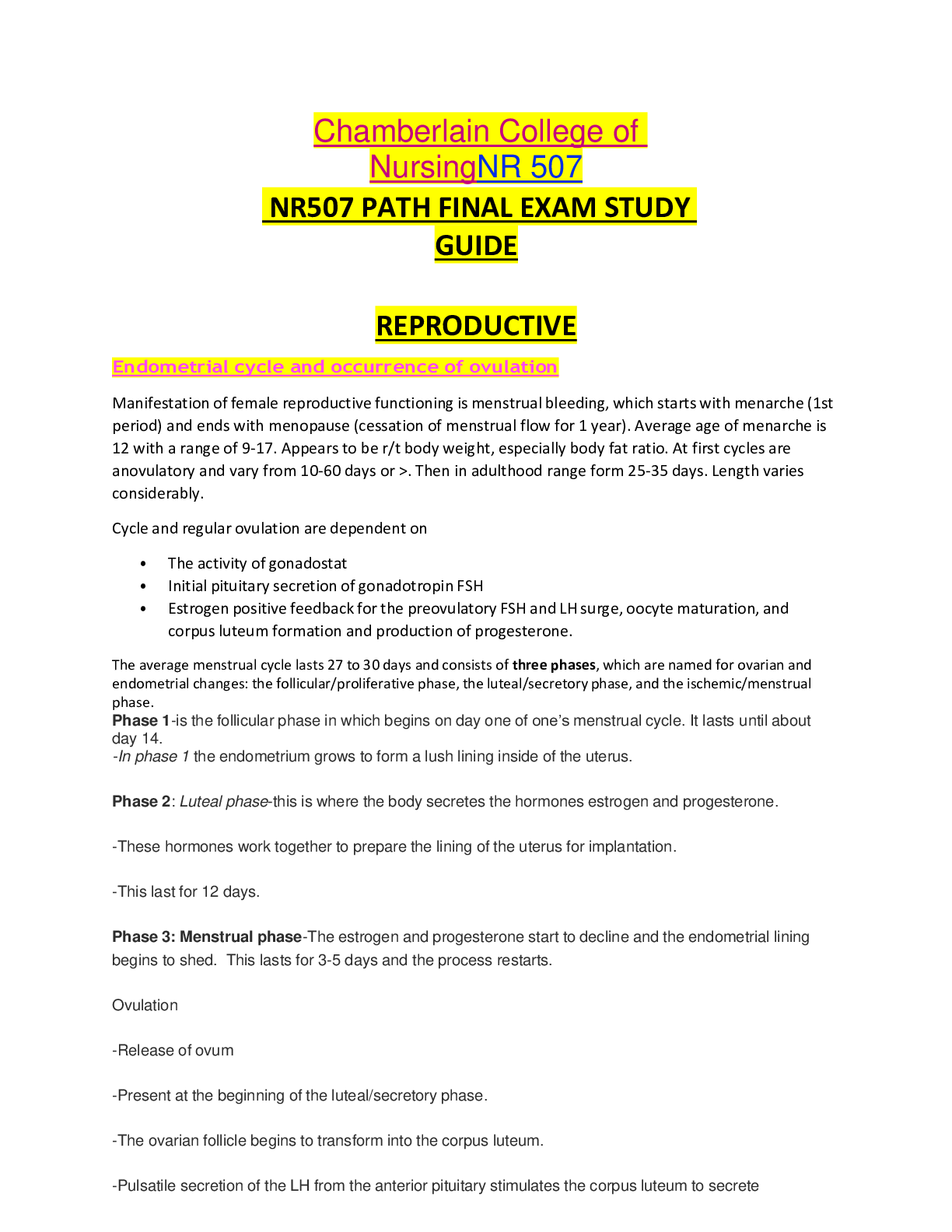
Reviews( 0 )
Document information
Connected school, study & course
About the document
Uploaded On
Sep 04, 2021
Number of pages
99
Written in
Additional information
This document has been written for:
Uploaded
Sep 04, 2021
Downloads
0
Views
54


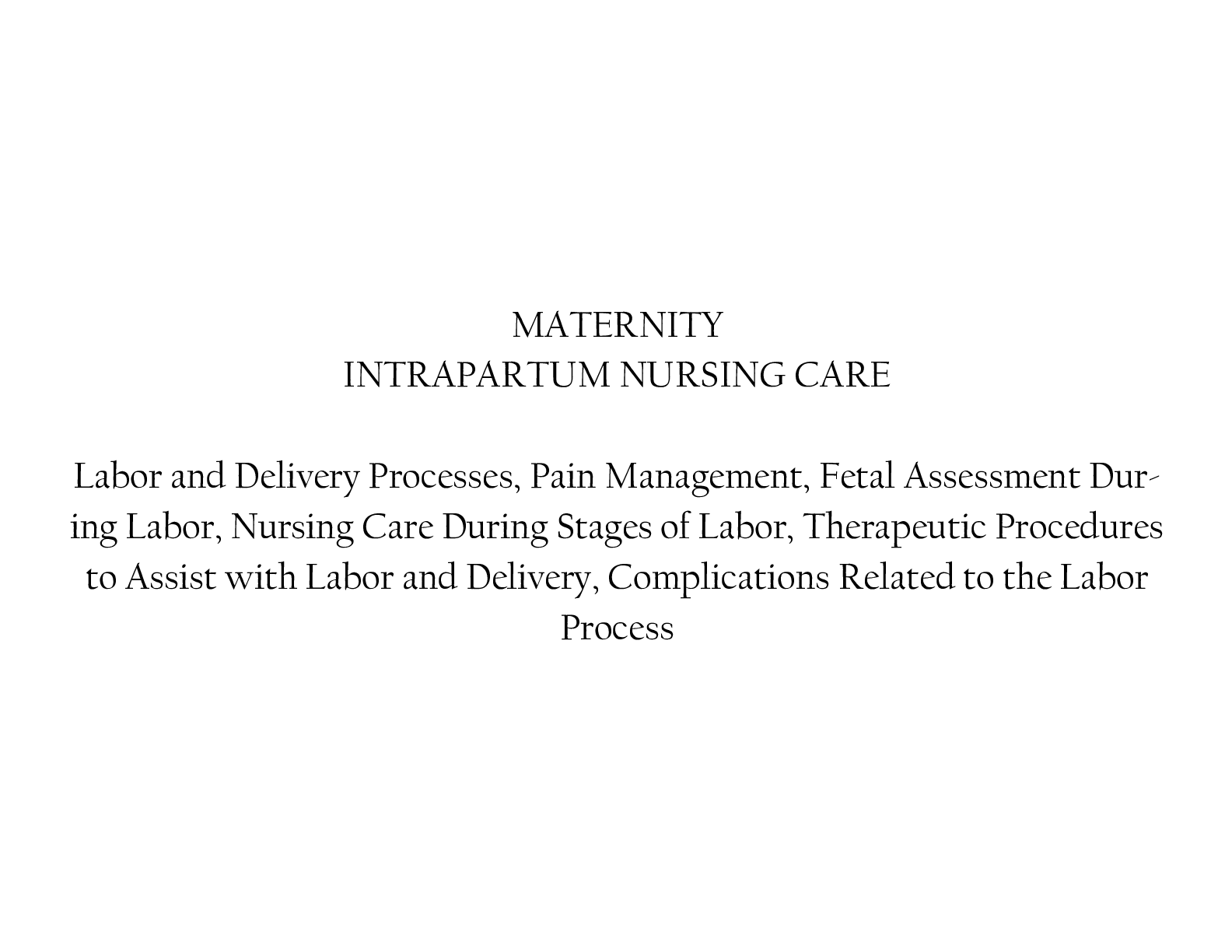

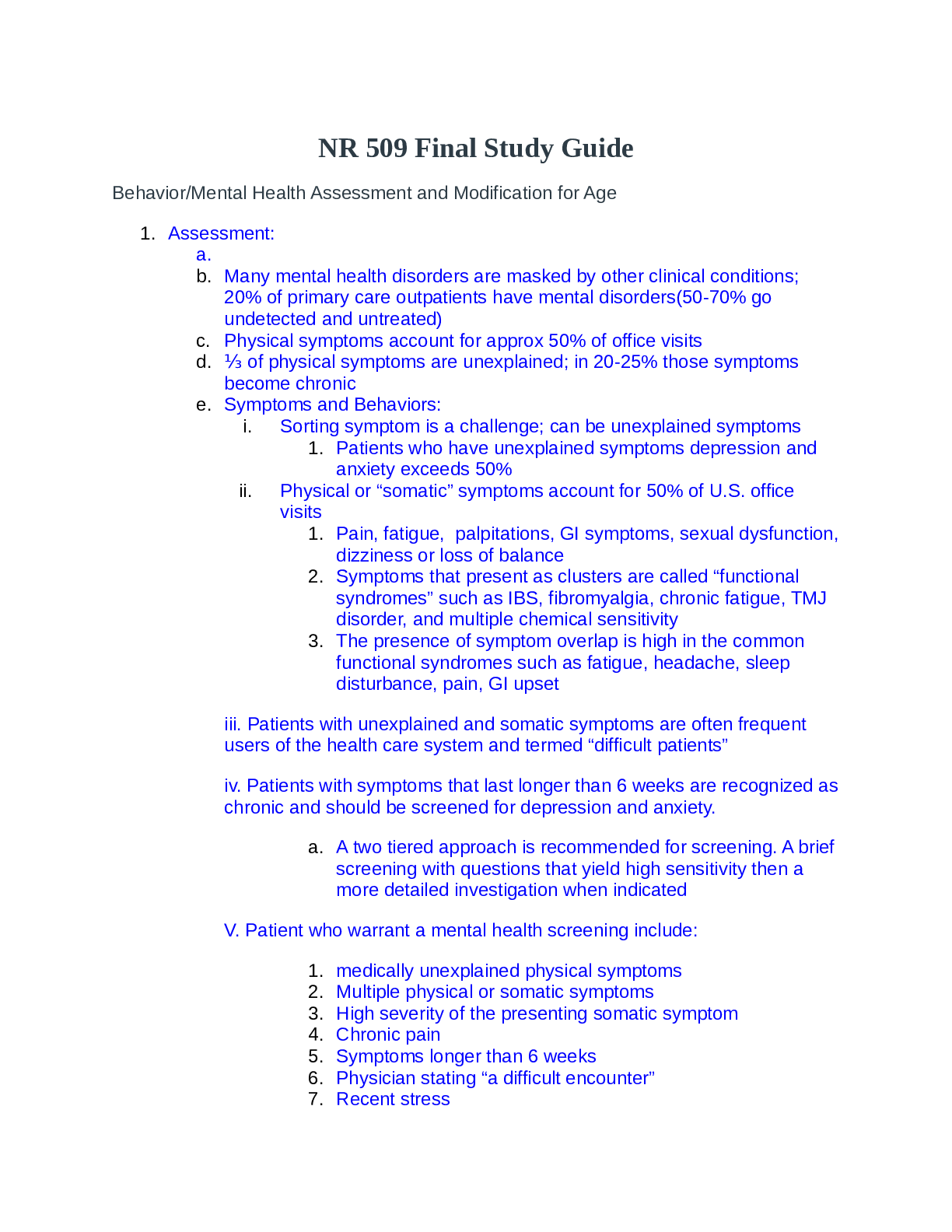
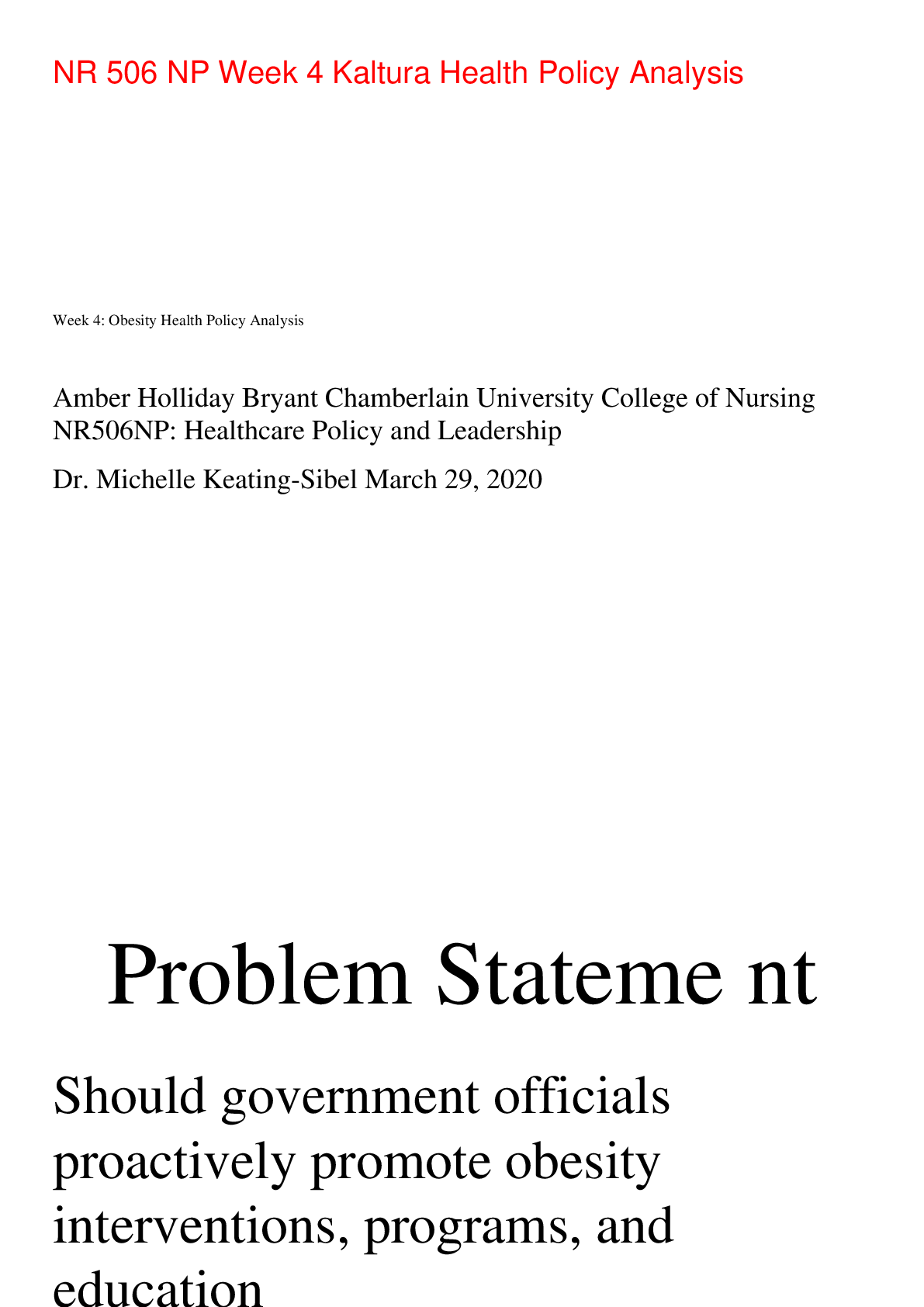
.png)
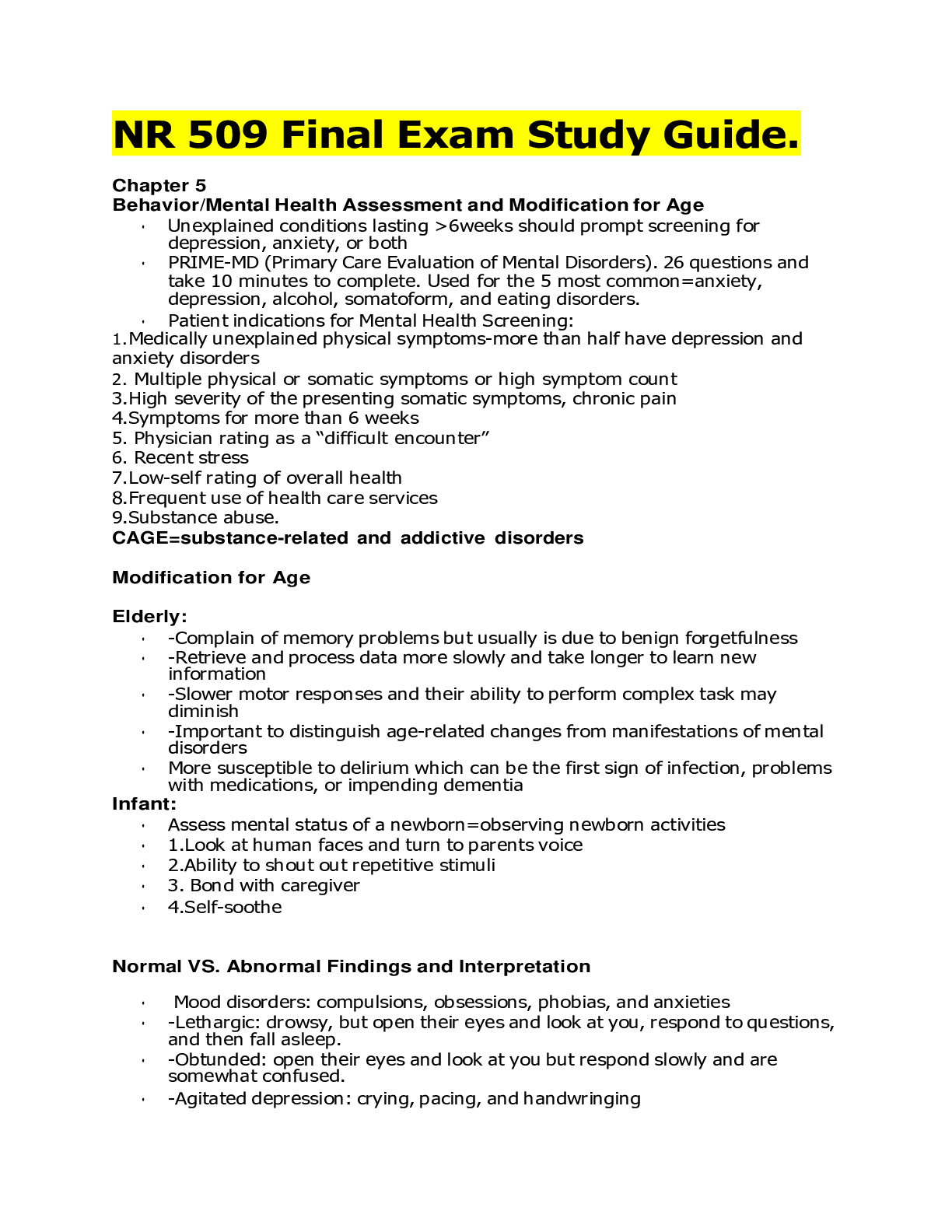
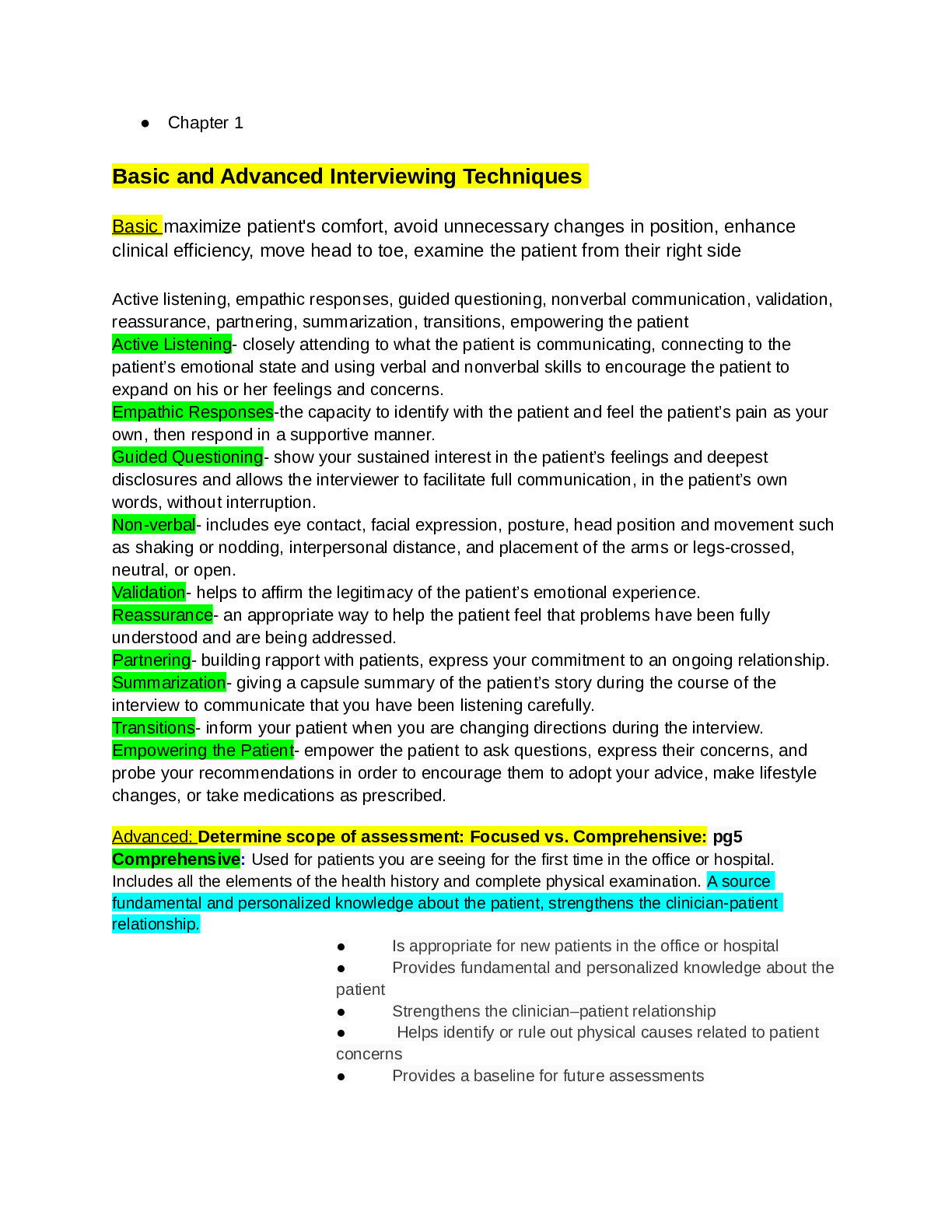



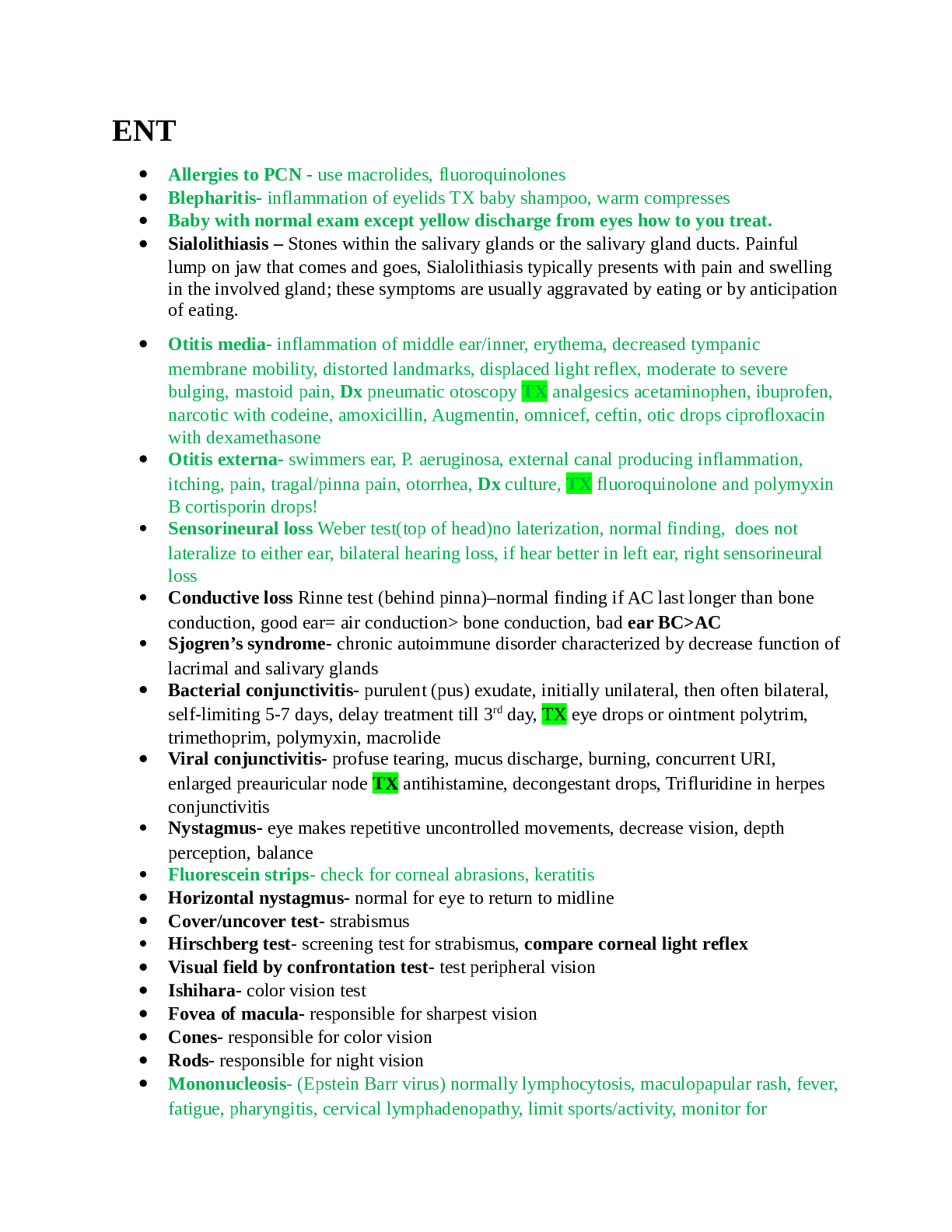







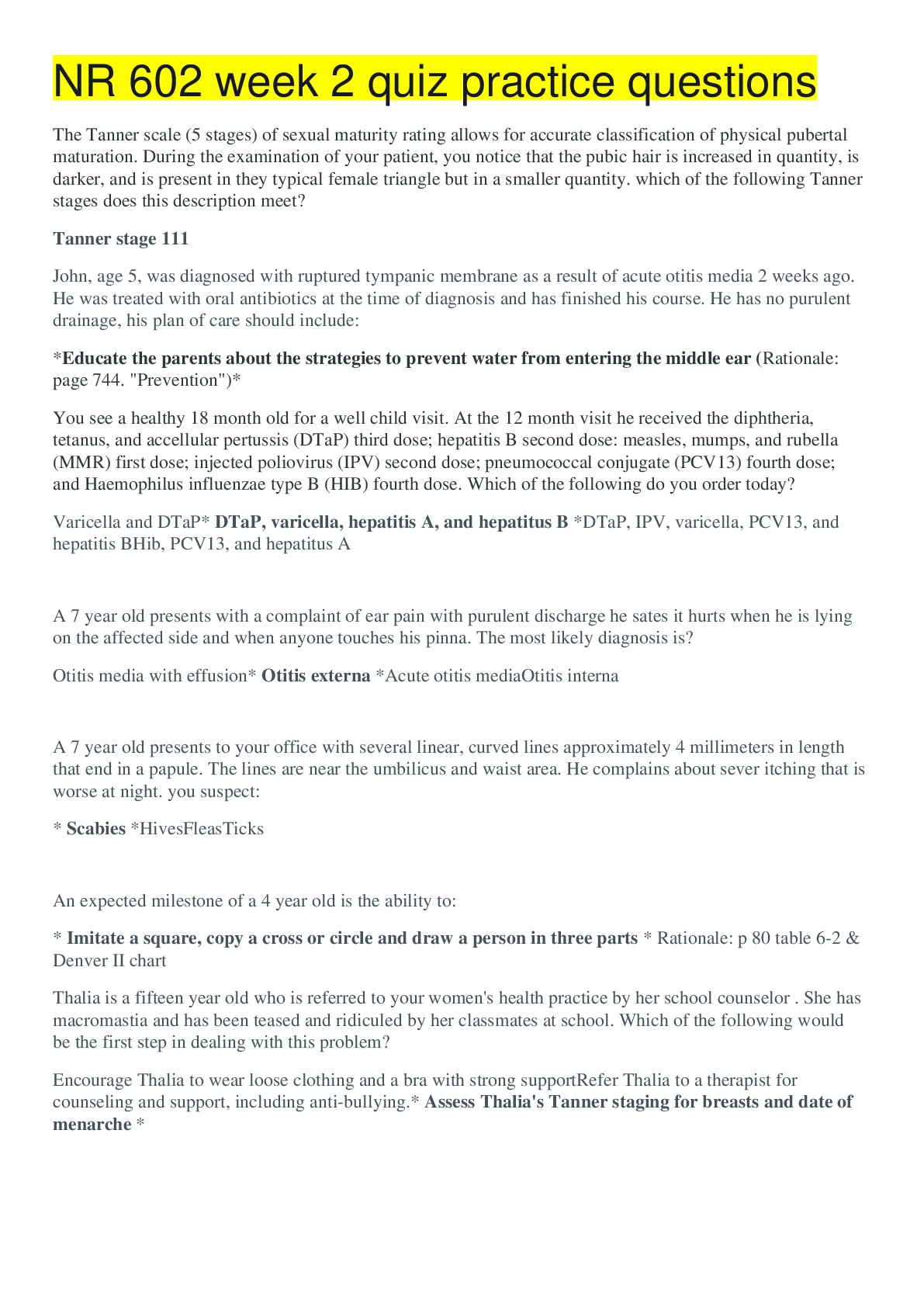
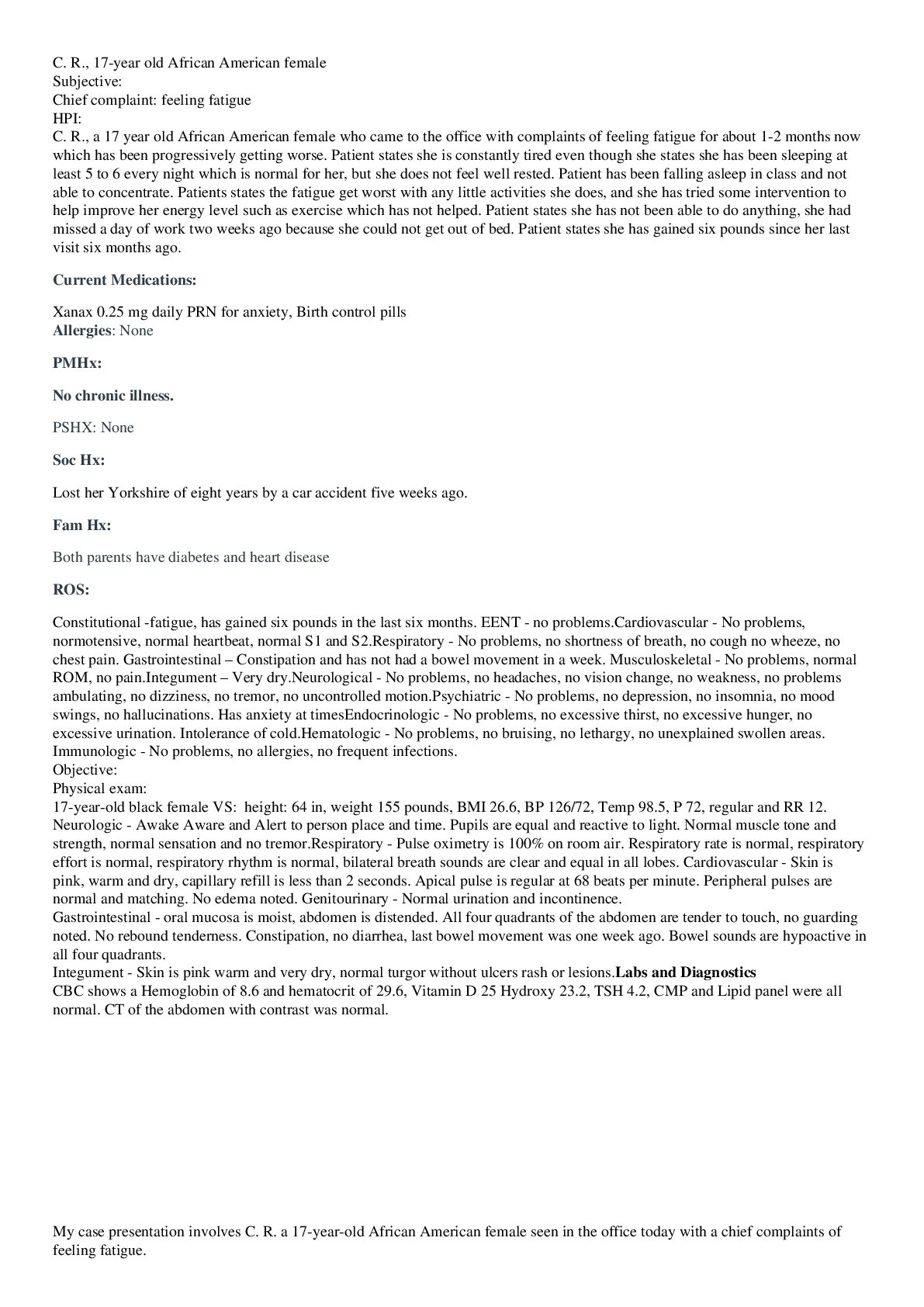


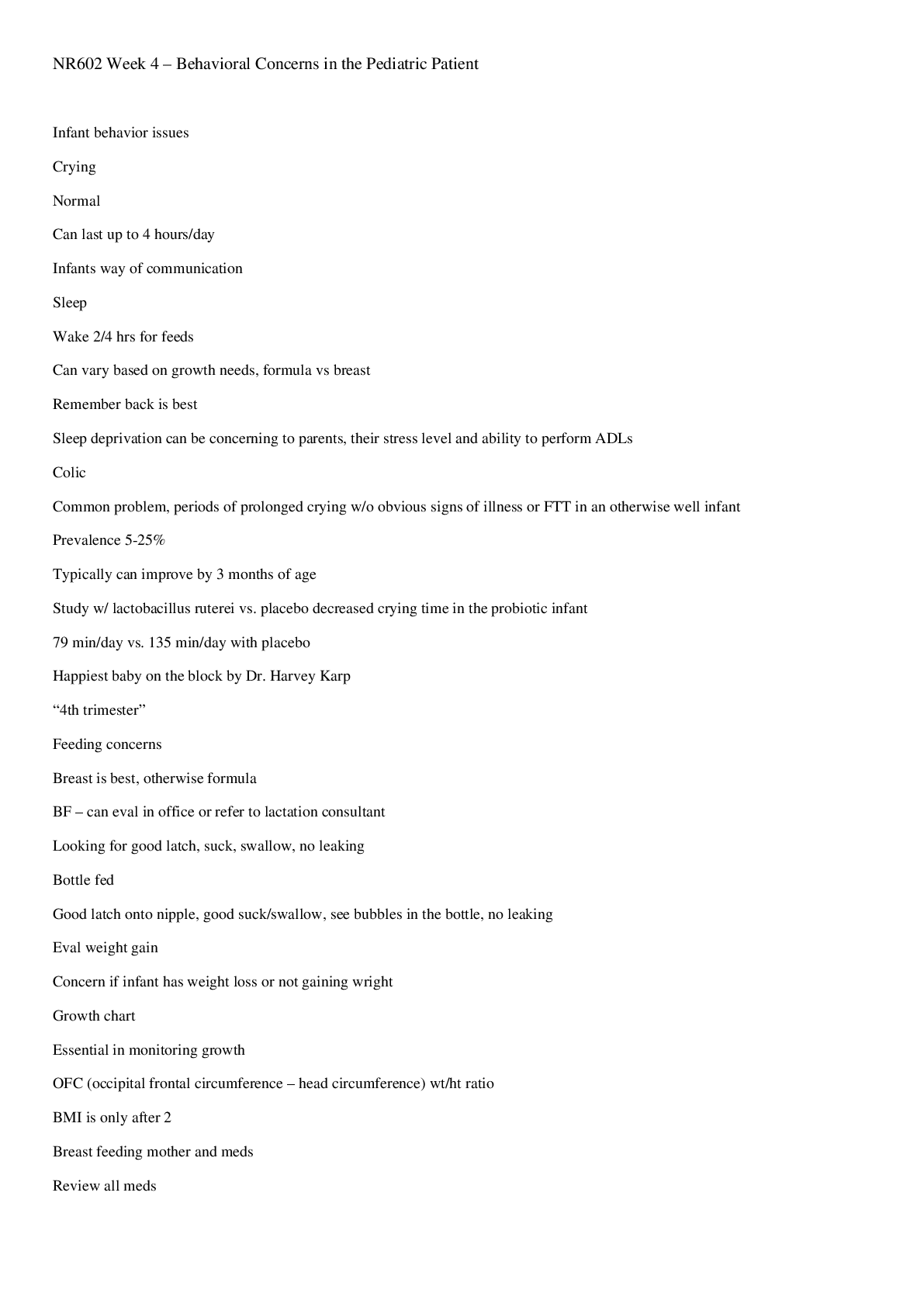

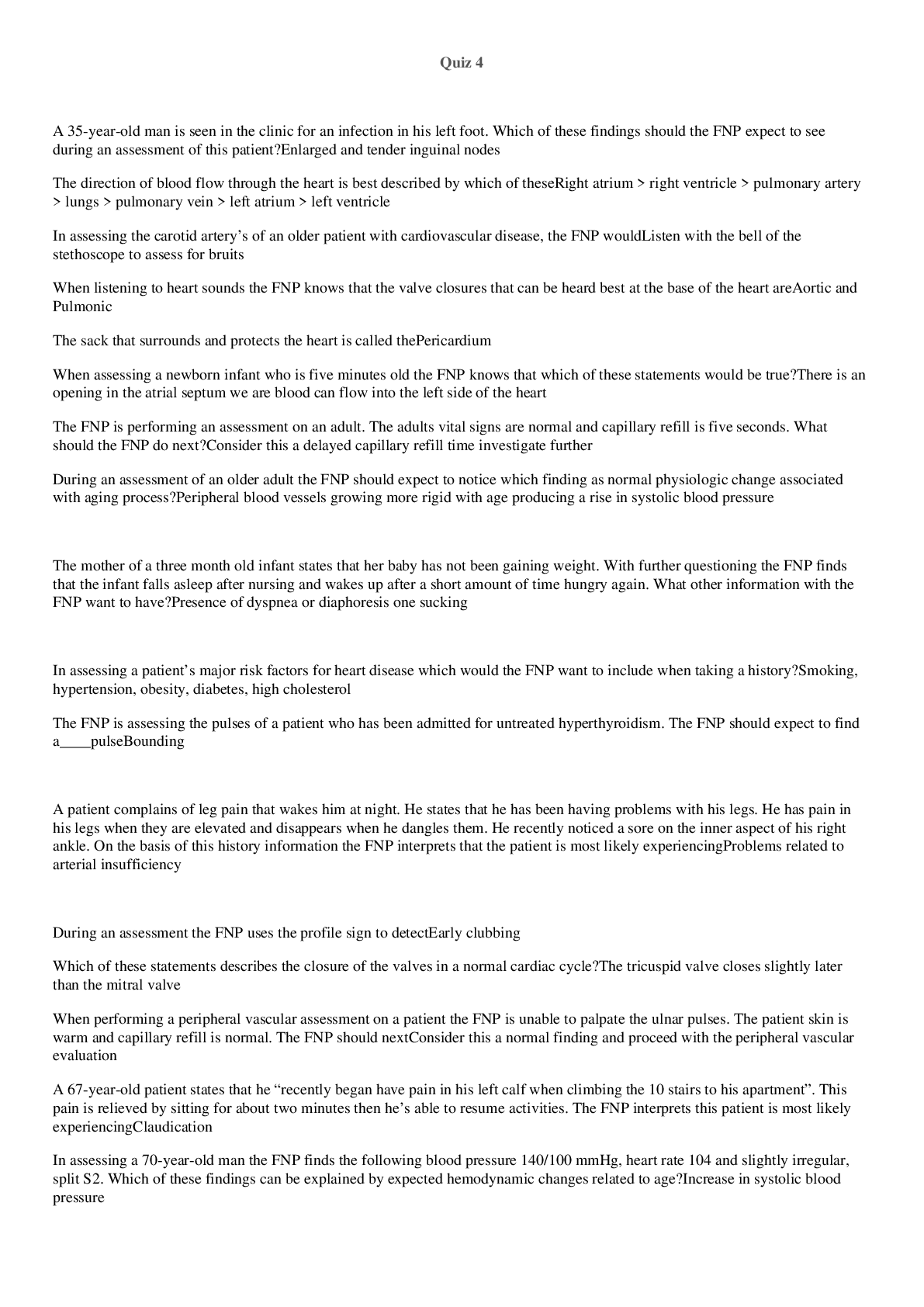




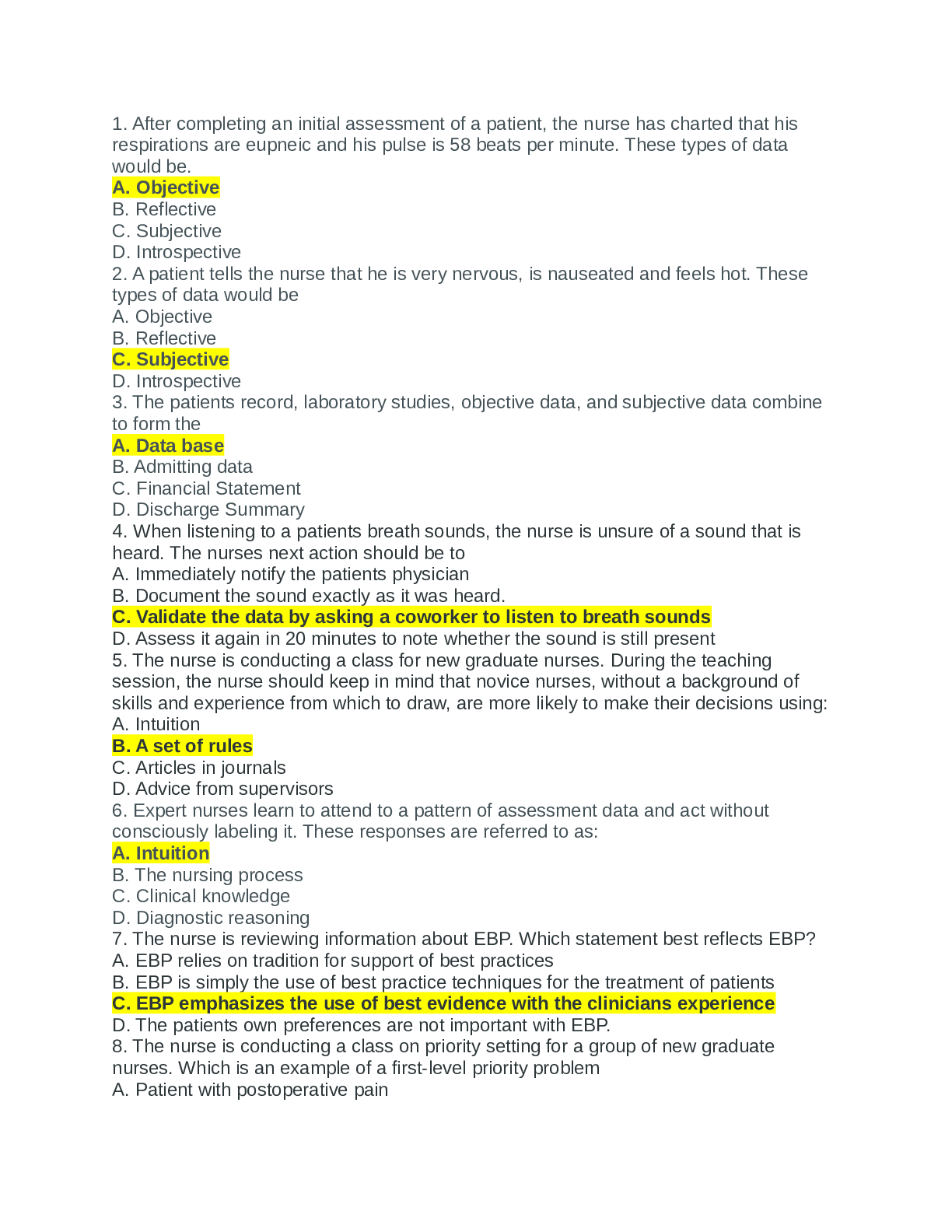

.png)

